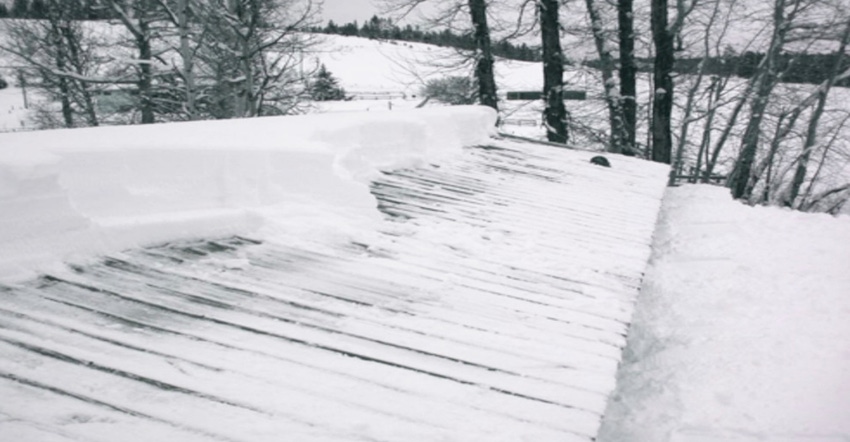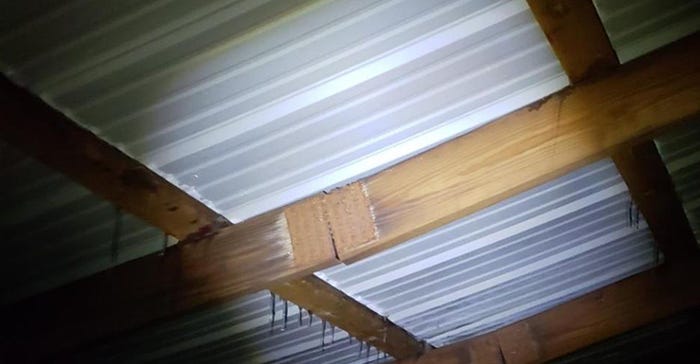Protect your roof this winter
Review this simple checklist to ensure the roofs on your buildings can withstand the worst conditions winter can throw at them.
March 15, 2019

Sponsored Content
This year the Midwest received an abnormal amount of snowfall and rain along with strong winds. The wind piled ice and snow in large drifts on the barns’ roofs that exceeded the rafters designed load.
No. 1 rule to protect your buildings during the upcoming winter season?
Promptly remove the snow and ice from building roofs!
Fifteen inches of wet/heavy snow or five inches of ice exceeds the limit of a rafter rated for a 25-pound snow load causing it to fail. Even a snowfall of just a couple inches can cause problems because of drifting snow. It cannot be stressed enough, remove all snow from roofs to prevent an accumulation that may cause roofs to fail.

In addition to removing the snow and ice promptly, you can also protect your building’s roofs by following these guidelines.
Check list and winter inspection for hog facilities
Remove any snow and ice accumulation from roofs.
Check to see that all trusses are in a plane (sitting vertical and not leaning or out of square to the connected walls and lateral braces) and that there are no bowed or broken trusses.
Check to see that all metal plates are intact and that they do not show any signs of stress (cracks, twisting or pulling away from the lumber).
Check to see that all web members are not bowed or broken.
Make sure that all lateral braces are intact and are not loose and that nails have not pulled away.
Select areas in the building and rake the insulation back and check the bottom cord lateral braces and make sure that they are intact.
Look for areas in the barn and attic that may show moisture (inspect ceiling insulation for evidence of roof leaks).
Check ridge caps and eave inlets for missing closure strips (it is crucial that buildings do not accumulate any snow in the attic). Close any summer air inlet doors.
Do not pile snow under eaves and move any snow that drifts up against the sidewalls of the buildings.
About the Author(s)
You May Also Like



